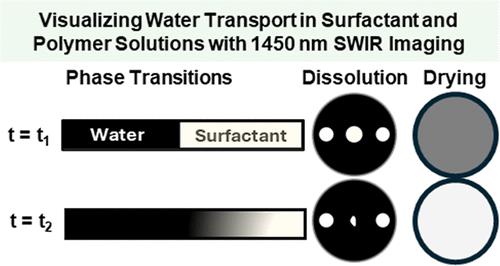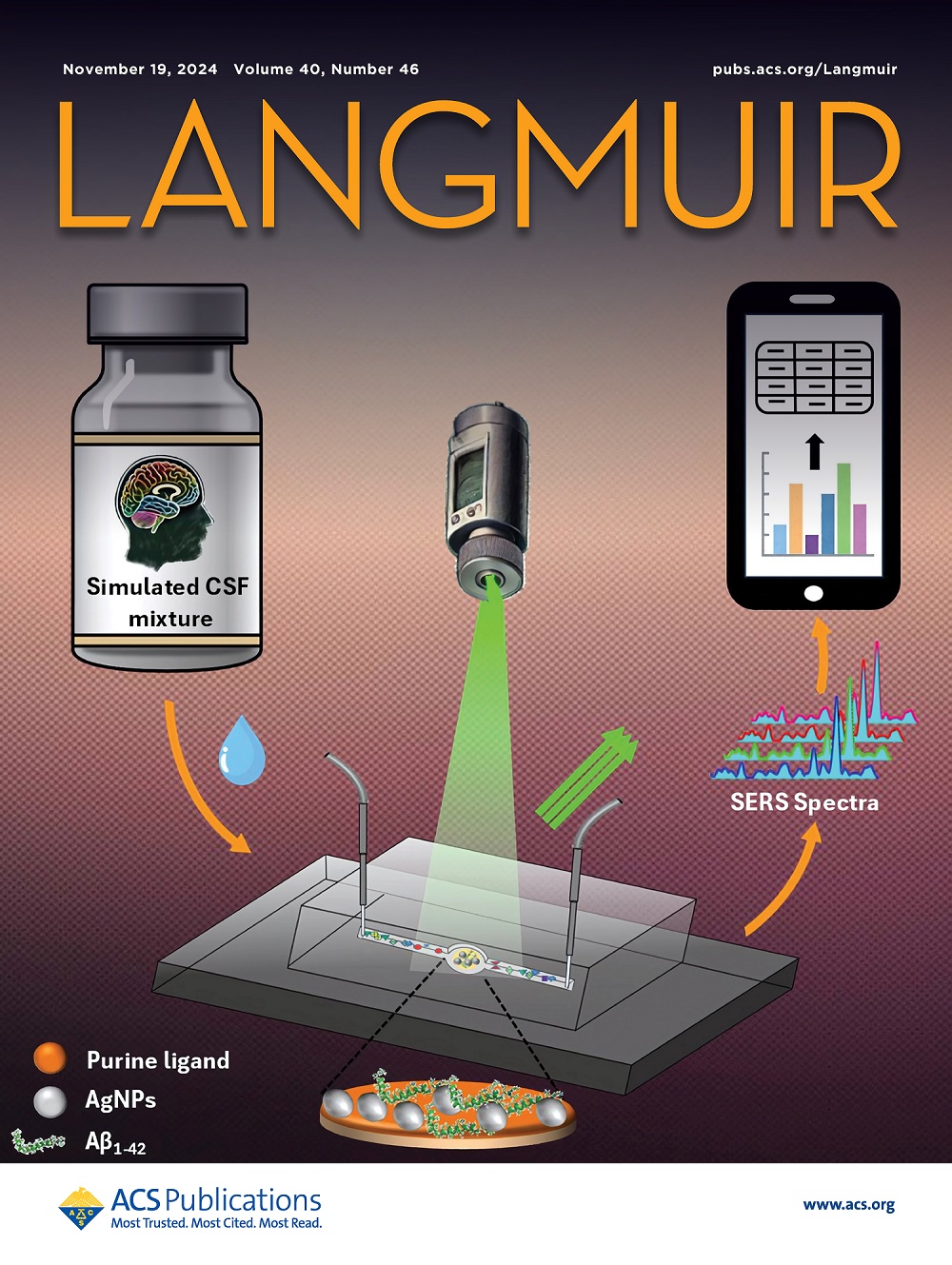Tracking Water Transport with Short-Wave Infrared: Kinetic Phase Diagrams, Dissolution, and Drying
IF 3.7
2区 化学
Q2 CHEMISTRY, MULTIDISCIPLINARY
引用次数: 0
Abstract
Short-wave infrared (SWIR) imaging has been extensively used in defense applications but remains underutilized in the study of soft materials and the broader consumer product industry. Water molecules absorb around ∼1450 nm, making moisture-rich objects appear black, whereas surfactants and other common molecules in consumer products do not absorb and provide a good contrast. This experimental study showcases the varied capabilities of SWIR imaging in tracking water transport in soft material systems by analyzing dissolution dynamics, tracking phase transitions (when combined with cross-polarized optical imaging), and monitoring drying kinetics in the surfactant and polymer solutions. The dynamic phase evolution to equilibria of a binary aqueous solution of a nonionic surfactant hexaethylene glycol monododecyl ether (C12E6) is presented. The influence of confined hydration in dynamic-diffusive interfacial transport capillaries was investigated by tracking the micellar to hexagonal phase transition concentration (C*). The effects of varying concentrations of an industrially relevant additive─monovalent common salt (NaCl) on the radial (2D) dissolution of lamellar-structured concentrated sodium lauryl ether sulfate (70 wt % SLE1S) pastes was studied. An equation was developed to estimate the radial dissolution coefficients based on total dissolution time and surfactant concentrations in the sample and solvent. Water loss was investigated by tracking the drying of aqueous poly(vinyl) alcohol films. In situ monitoring of drying kinetics is used to draw correlations between the solution viscosity and drying time. SWIR imaging has already revealed previously inaccessible insights into surfactant hydration and holds the potential to become a turnkey method in tracking water transport, enabling better quality control and product stability analysis.

求助全文
约1分钟内获得全文
求助全文
来源期刊

Langmuir
化学-材料科学:综合
CiteScore
6.50
自引率
10.30%
发文量
1464
审稿时长
2.1 months
期刊介绍:
Langmuir is an interdisciplinary journal publishing articles in the following subject categories:
Colloids: surfactants and self-assembly, dispersions, emulsions, foams
Interfaces: adsorption, reactions, films, forces
Biological Interfaces: biocolloids, biomolecular and biomimetic materials
Materials: nano- and mesostructured materials, polymers, gels, liquid crystals
Electrochemistry: interfacial charge transfer, charge transport, electrocatalysis, electrokinetic phenomena, bioelectrochemistry
Devices and Applications: sensors, fluidics, patterning, catalysis, photonic crystals
However, when high-impact, original work is submitted that does not fit within the above categories, decisions to accept or decline such papers will be based on one criteria: What Would Irving Do?
Langmuir ranks #2 in citations out of 136 journals in the category of Physical Chemistry with 113,157 total citations. The journal received an Impact Factor of 4.384*.
This journal is also indexed in the categories of Materials Science (ranked #1) and Multidisciplinary Chemistry (ranked #5).
 求助内容:
求助内容: 应助结果提醒方式:
应助结果提醒方式:


